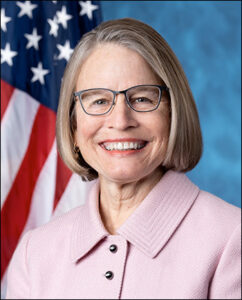April 2, 2021 — Former Iowa state senator, Rita Hart (D), withdrew her challenge late Wednesday afternoon, before the House Administration Committee pertaining to Rep. Mariannette Miller-Meeks’ (R-Ottumwa) six-vote victory in the November election. Also, the New Mexico Democratic State Central Committee met virtually over the past two days in order to choose a congressional nominee to fill the state’s 1st District vacancy. The seat is in special election cycle because Deb Haaland resigned her federal legislative office in order to join the Biden cabinet as Interior Secretary. Details below:
Iowa
In a released statement, IA-2 challenger Hart said, “Despite our best efforts to have every vote counted, the reality is that the toxic campaign of political disinformation to attack this constitutional review of the closest congressional contest in 100 years has effectively silenced the voices of Iowans.”
In actuality, the miniscule victory margin is the first such result of this type since 1984, not in 100 years, when in a similar case the House of Representatives decided in early 1985 that then-Rep. Frank McCloskey (D-IN) was re-elected with a four-vote margin.
The IA-2 result was a point of controversy ever since the new Congress was sworn into office on Jan. 3. Instead of challenging the six-vote margin in the Iowa court system, Hart chose to bring her complaint directly to the House of Representatives. She claimed that Iowa election authorities has not counted 22 legal ballots that would have changed the final outcome. The officials retorted that they rejected the ballots for various reasons of noncompliance with state election laws.
After the body’s internal organization process was completed, the House Administration Committee voted on a 6-3 party line vote to hear Hart’s case. There had been much chatter in the news media and blogosphere during the past two weeks about the Democratic leadership wanting to award the seat to Hart, thus displacing Rep. Miller-Meeks who had been provisionally seated on Jan. 3 pending the outcome of the Hart challenge.





